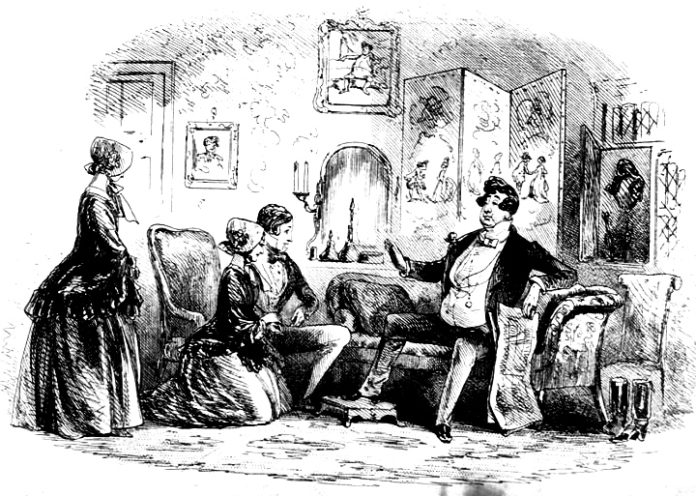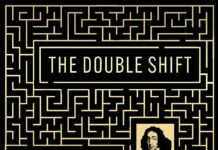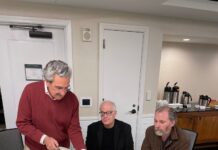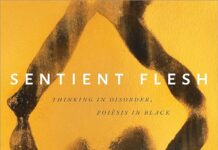by Alex Woloch
This essay was peer-reviewed by the editorial board of b2o: an online journal.
We probably all have a list of courses that we’ve dreamed up but never taught and high up in my list of this would be a course that we might call (somewhat ironically) “Children of Bleak House”: texts that don’t only feature multiple narrators but, more peculiarly, oscillate between a first- and third-person voice. The four “rules” of this particular subset are that there must be two, and no more than two narrative voices; that they occupy these distinct and opposed grammatical modes; that they both persist, in the novel; and that the text alternates between them, without ever fusing them together or providing a clear master frame. Some of the examples I conjured up – based almost entirely on the random encounters that I happened to have — were Simone de Beauvoir’s 1953 The Mandarins, George Perec’s W or The Memory of Childhood (1970) and Mario Vargas Llosa’s The Storyteller (1987). Any number of texts might edge the category but there is something significant about these particularly neat examples. The aesthetic here seems at once artificial and implacable, trivial and profound. Most of the examples occur after the experimental provenance of the novel has been fought for, secured and even banalized. It is not surprising, in 1953, 1970, or 1987 to read a novel with this kind of back-and-forth: on the contrary, these novels are all playing “the rules of the game.” At the same time, there is no word I know of for this category — it is not particularly Google-able – since “double narrative” or “dual narrators” is much too general: it doesn’t capture the jarring dissonance between first- and third-person, in particular.
The situation is complicated in the case of Bleak House, which is arguably, and merely because of its historical position, a much more experimental text. Or is it less experimental than the other examples? On the one hand, the text’s singularity is remarkable. No other Dickens novel, of course, had this strange structure. But did any other Victorian novel have it, or any novel, of any kind, before 1853? What text is less beholden to the precedents of genre – even as this core innovation speaks, paradoxically, to the basic condition of the novel, as genre, torn between first- and third-personness? To see this feature of the novel is also to see how Bleak House is a theory of the novel. And yet this feature was in many ways unseen; this “remarkable” singularity was, as critics have noted, largely unremarked: by Dickens, by his reviewers, or in nineteenth- and early twentieth-century criticism. Thus Philip Collins concludes in The Critical Heritage that “Dickens’s experiment in [dual-narration] was little discussed;” and Jacob Korg, in his 1968 introduction to an anthology of Bleak House criticism, concurs that “The arrangement was accepted without much question by his contemporaries.” Korg continues, in what seems to me an apt summary of the basic problem: “But modern readers, who feel that the angle from which a story is told may play a crucial part in determining its shape and meaning, cannot escape the sense that the split in Dickens’s narrative method creates a corresponding fissure in the vision presented by the novel” (Korg 1968, 15).
When do the two voices in Bleak House become visible, as voices, as structure, as form, as “fissure”? What does it mean for us, as “modern readers,” that this perspective on the novel is at once historically contingent and yet, as Korg suggests, “[in]escap[able]”? (What does it mean that in 1853 this novel’s narrative originality was so marked, or so formal, as to not be recognizable at all?) The initial invisibility of Bleak House’s form struck me as a productive node, or knot, for thinking about some of the questions that the V21 manifesto poses. From one perspective, such invisibility might dramatize what this manifesto calls a “fetishization of the archival,” which I take to mean, among other things, a faith that the accumulation of more complete historical knowledge can reliably work to secure literary and critical understanding. Here is an instance, instead, of radical “untimeliness,” of a quality in the text that, as Korg says, “we cannot escape,” but that can only be recognized by accepting and inhabiting our difference from the text’s own historical coordinates. Moreover, the quality that is invisible here — within history — is nothing other than literary form itself: to grapple with the relative inattention to the double voice of Bleak House in 1853 (and for much longer) would also be an instance of “recentering formal analysis as the province of literary critical knowing.”
Korg’s brief comment casts Bleak House structure itself as negative – as a “split” and a “fissure” – and it also points to another crucial dimension of Bleak House. This is the way that the novel does not merely exhibit, but seems to internalize, its narrative condition. What begins, quite evidently, as a “narrative split” (visible on the surface of the discourse) travels — with that implacable quality I noted — into a “corresponding” “fissure” at the heart of the novel’s “vision.” Versions of this correspondence – and of such disturbing “fissure” – abound in criticism of Bleak House: from my perspective, it is the self-evident starting point for any thinking about the novel. Every intuition I have about this text accords with what we could call a radical internalization of its narrative principle. This is most obvious perhaps in the felt qualities of first- and third-person voice in Bleak House. The third-person is not just omniscient but locked into an absolute present-tense. Here is a secondary innovation that also seems unprecedented (had any novel been written in this kind of present tense before?) and yet, also, largely unnoticed. The first-person narrative, likewise, activates the uncanniness of its narrative mode by introducing a narrator who strains so hard against, and thus accentuates, the brutally subjective ground of first-personness. Here too we encounter another great discovery in twentieth-century criticism, beginning with Alex Zwerdling’s 1973 “Esther Summerson Rehabilitated” and continuing in a chain of dark, formally-nuanced, Esther-centered readings by critics like Caroline Dever, Kevin McLaughlin, Alexander Welsh. One way to understand this split structure, indeed, is as it facilitates subjective and objective extremes that would otherwise be untenable; and certainly the rhythm of reading Bleak House can involve a strange process of catch and release, of claustrophobia (even suffocation) and disorienting relief, that is motored around the swivels between one narrative and the other.
At the same time, and despite such almost physiological absorption of the novel’s technique, the invisibility of Bleak House structure – this strangely belated emergence of the object that we now see – must surely disorient our formal certainties as well. To track the rise of attention to the “dual narrative,” in the twentieth-century, is inevitably to see how deeply our own academic knowledge of Bleak House is intertwined with the consolidation of modernist aesthetics, most generally, and Jamesian narrative theory, more particularly: protocols that also underwrite twentieth-century academic criticism writ large. Here an article like “Point of View in Dickens,” from the 1950 PMLA, would, if it didn’t exist (it does) have to be invented. (Jamesian aesthetics is tossed around here in the same confident, au courant way as a PMLA article today might dispatch or use Ranciere). It seems clear, in fact, that a kind of reification, in the mid-twentieth century — of “point-of-view,” “voice,” and “spatial form” (deployed deftly in fact by Korg) – help allow us to see Bleak House for what it is, or, at least, for what we take it to be. Perhaps the utopian horizon here would be to imagine that we could work our way back into — or forward toward – an aesthetic perspective in which the dual narrative would disappear? Or in which form operates unlicensed and unregistered, more wildly and unofficially, covertly, unconsciously, unhardened by these neo-Jamesian categories? In this way, there is something in the Victorian blindness that might be incredibly productive: to be uncertain about how or when form starts also means we can be less limited or restrained in demarcating where form might end.
CONTRIBUTOR’S NOTE
Alex Woloch is Professor and Chair of English at Stanford University. He is the author of The One Versus The Many: Minor Characters and the Space of the Protagonist (Princeton UP, 2003) and Or Orwell (Harvard UP, 2015).




